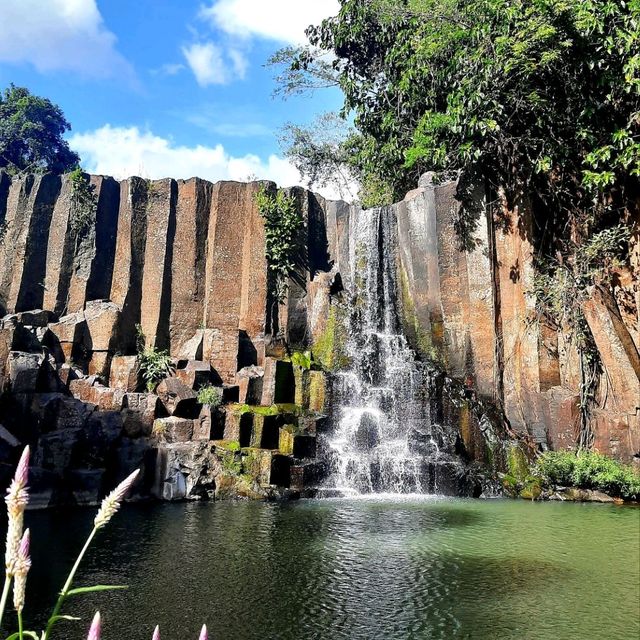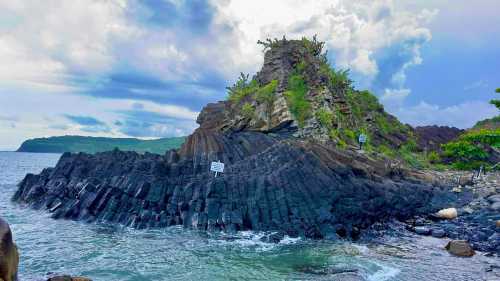Popular Trip Moments
Travel Review: 3 Days 2 Nights in Phú Yên | Phú Yên – Where Time Slows Down | "Gui Ren Code 214: The Secret Breathing Realm Hidden by the Gods" | Dai Lanh Cape | Phu Yen | Luxury Stay and 1st Dawn Experience | First time 1 year old baby travels to Tuy Hoa | Vietnamese specialty-tuna eyes | Screaming Recommendation! Sao Mai Resort, the Dreamy Choice for a Sui Hoa Getaway | [Mandala Hotel: An Urban Oasis for a Luxurious Getaway] | Stumbled into a real-life utopia! This Phu Yen hotel is incredible | Amazing! Sao Mai Resort: The Hidden Gem of Tuy Hoa | A Must-Stay! Sao Mai Resort, a Hidden Gem in Tuy Hoa | Stop searching! Sao Mai Resort is the perfect choice for your Sui Hoa getaway! | Phu Yen - Yellow flowers on green grass 🌼🪴 | Phu Yen: 🇻🇳 Vietnam’s Hidden Coastal Gem ☀️🌊 | A dream seaside trip at Stelia Beach Resort | Tuy Hoa, Vietnam: An Off-the-Beaten-Track Destination | Zannier Hotels Bai San Ho | the healing beach city in Vietnam | Phu yen city | This is one of my favorite cities in Vietnam. 🌊🇻🇳 | Windy Nghinh Phong Tower | Phu Quoc Island Starfish Beach | Tuy Hoa, the place where the sun rises first in Vietnam | The land of the dead 🌊 | Phu Yen - Quy Nhon
Recommended Attractions at Popular Destinations
Attraction near Bangkok | Attraction near Manila | Attraction near Tokyo | Attraction near Taipei | Attraction near Hong Kong | Attraction near Seoul | Attraction near Kuala Lumpur | Attraction near Los Angeles | Attraction near Shanghai | Attraction near New York | Attraction near Shenzhen | Attraction near Osaka | Attraction near Singapore | Attraction near London | Attraction near Guangzhou | Attraction near San Francisco | Attraction near Beijing | Attraction near Macau | Attraction near Bali | Attraction near Jakarta | Attraction near Paris | Attraction near Ho Chi Minh City | Attraction near Istanbul | Attraction near Phuket | Attraction near Chicago | Attraction near Seattle | Attraction near Toronto | Attraction near Orlando | Attraction near Cebu | Attraction near Chiang Mai
Popular Attractions
Tokyo Skytree | Jinsha Site Museum | The Ancient City | Yas Waterworld | Acropolis Museum | Oriental Pearl Radio & Television Tower | Manila Ocean Park | Yas Island | Chuanlord Tourism & Leisure Expo Garden | KL Bird Park | Universal Studios Singapore | The Sanctuary of Truth | Mount Fuji | Dubai Miracle Garden | Catherine Palace | Shenzhen Civic Center | Mayfield Lavender Farm | Jebel Jais | Panfilov Park | BAPS Hindu Mandir, Abu Dhabi | Orono Park Dog Park | Wall Of Hope | Parappally view point | Ruiny młyna | Platja de los Arenales del Sol | Cap Homard | Explanada del Palacio Municipal de Ecatepec | Church Of Mount Zion | Kali Mata Mandir काली माता मंदिर सरदार नगर | Cobalt Municipal Park
Popular Restaurants in Phu Yen Province
Scandia Restaurant | Cafe Sandy Beach | Nha Hang Hai San | Cafe Q Q Brothers | Matt Cafe | Com nieu Tuy Hoa | Chao Hau | Com nieu Ngon Tuy Hoa | Huy Tung Coffee | Huong Huong Coffee | Tre Viet | PHD Photo & Coffee | Vietnamese Cuisine Restaurant Nam Anh | Tranh Que Cafe | Quán nhậu THÁI BÌNH - Bia Tươi - Cháo Vịt | Lau de Chop Chai Restaurant | Quan Pho Tan Binh | Quán Bia VINH YẾN | Mộc Trà Sơn Trang Restaurant | Quán nhậu Tới Bến | Thiên Đường Quán | HÓC RĂM QUÁN | Quán nhậu 6 xem | Quán Nhậu Cây Số 5 | Quán nhậu Lối nhỏ | Quán Dung Linh | Sands bay | Nhà Anh Fát Đẹp Trai | Quán Nhậu Bảy Thành | Quán Huy Cầu Đúc
Popular Ranked Lists
Top 5 Best Things to Do in Fangchenggang | Popular Best Things to Do in Qinzhou | Popular Must-Visit Restaurants in Melbourne | Popular Luxury Hotels in Al Ula | Popular Must-Visit Restaurants in Hong Kong | Popular Must-Visit Restaurants in Madrid | Popular Best Things to Do in Baiyin | Popular Luxury Hotels Near Silivri | Top 3 Luxury Hotels in Tashkent | Popular Best Things to Do in Suifenhe | Popular Must-Visit Restaurants in Phuket | Popular Must-Visit Restaurants in Athens | Popular Must-Visit Restaurants in Kyoto | Popular Best Things to Do in Zhuji | Popular Premium Hotels Near Dearborn | Popular Must-Visit Restaurants in Taipei | Popular Luxury Hotels Near Naxos | Top 3 Best Things to Do in Shengsi | Popular Luxury Hotels Near Birmingham | Popular Luxury Hotels Near Fishers | Popular Must-Visit Restaurants in Jeju | Popular Luxury Hotels Near Chichibu | Popular Must-Visit Restaurants in Hanoi | Popular Must-Visit Restaurants in Paris | Popular Best Things to Do in Jurong | Popular Must-Visit Restaurants in London | Popular Must-Visit Restaurants in Chaozhou | Top 3 Best Things to Do in Guigang | Popular Must-Visit Restaurants in New York | Top 6 Best Things to Do in Hezhou
Payment Methods
Our Partners
Copyright © 2025 Trip.com Travel Singapore Pte. Ltd. All rights reserved
Site Operator: Trip.com Travel Singapore Pte. Ltd.
Site Operator: Trip.com Travel Singapore Pte. Ltd.














